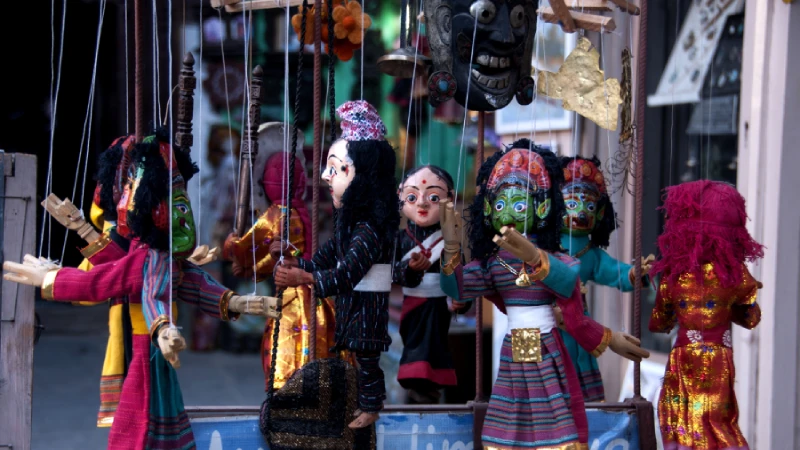Darjeeling, with its rich cultural heritage and diverse communities, is a hub of vibrant festivals and special events throughout the year. From traditional celebrations to modern cultural programs, these events offer a unique opportunity to experience the local culture, traditions, and way of life. In this guide, we’ll explore the most popular festivals and events in Darjeeling, their significance, and how you can be a part of these celebrations.
Why Festivals and Events in Darjeeling are Special
Festivals and events in Darjeeling are more than just celebrations; they are a reflection of the town’s multicultural heritage. Here’s what makes them unique:
- Cultural Diversity: Each festival represents the traditions of different communities, offering a rich tapestry of cultural experiences.
- Community Spirit: Festivals bring people together, fostering a sense of unity and belonging.
- Tourist Attraction: These events attract visitors from around the world, making them a key part of Darjeeling’s tourism industry.
- Traditional Music and Dance: Festivals are a showcase of traditional performances, from Nepali folk dances to Tibetan chants.
Major Festivals in Darjeeling
Here’s a detailed look at the most popular festivals celebrated in Darjeeling:
1. Dashain
- Time: September-October
- Significance: Dashain is the most important Hindu festival in Nepal and is widely celebrated by the Nepali community in Darjeeling. It marks the victory of good over evil.
- Celebrations:
- Families gather to offer prayers and sacrifices to Goddess Durga.
- Homes are decorated, and traditional feasts are prepared.
- Elders bless younger family members by applying “tika” (a mixture of rice, yogurt, and vermilion) on their foreheads.
- Tourist Experience: Join local families for tika and enjoy traditional Nepali dishes like sel roti (rice doughnuts) and meat curries.
2. Tihar (Festival of Lights)
- Time: October-November
- Significance: Tihar is a five-day festival that honors animals, nature, and the bond between siblings.
- Celebrations:
- Each day is dedicated to a different animal, such as crows, dogs, and cows.
- Homes are illuminated with oil lamps and colorful rangoli designs.
- On the final day, sisters apply tika on their brothers’ foreheads to wish them long life and prosperity.
- Tourist Experience: Witness the beautiful lights, enjoy traditional music, and try sweets like laddoos and barfis.
3. Losar (Tibetan New Year)
- Time: February-March
- Significance: Losar is the Tibetan New Year, celebrated by the Tibetan community in Darjeeling.
- Celebrations:
- Monasteries are decorated, and prayers are offered for peace and prosperity.
- Traditional dances like the Cham dance are performed.
- Families prepare special dishes like Guthuk (noodle soup) and Khapse (fried cookies).
- Tourist Experience: Visit monasteries like Bhutia Busty and Ghoom to witness the celebrations and enjoy Tibetan cuisine.
4. Christmas and New Year
- Time: December
- Significance: Celebrated by the Christian community and tourists, Christmas and New Year bring a festive vibe to Darjeeling.
- Celebrations:
- Churches are decorated, and midnight mass is held.
- The town is lit up with Christmas lights and decorations.
- Fireworks and parties mark the New Year celebrations.
- Tourist Experience: Enjoy the festive atmosphere, shop for Christmas goodies, and attend parties at local hotels and restaurants.
5. Buddha Jayanti
- Time: May
- Significance: This festival celebrates the birth, enlightenment, and death of Lord Buddha.
- Celebrations:
- Monasteries hold special prayers and rituals.
- Devotees offer flowers, candles, and incense at Buddhist shrines.
- Processions and cultural programs are organized.
- Tourist Experience: Visit monasteries like Dali and Bhutia Busty to participate in the celebrations and learn about Buddhist traditions.
Lesser-Known Festivals in Darjeeling
1. Tendong Lho Rum Faat (Lepcha Festival)
- Time: August
- Significance: Celebrated by the Lepcha community, this festival honors Mount Tendong and the Lepcha culture.
- Celebrations: Traditional dances, songs, and feasts are organized.
2. Maghe Sankranti
- Time: January
- Significance: A harvest festival celebrated by the Nepali community.
- Celebrations: Families prepare special dishes like til ko laddu (sesame sweets) and yam dishes.
How to Experience Festivals in Darjeeling
Here are some tips to make the most of your festival experience:
- Plan Ahead: Check the festival dates and plan your trip accordingly.
- Respect Local Customs: Dress modestly and follow local etiquette, especially during religious ceremonies.
- Participate Actively: Join in the celebrations, whether it’s dancing, feasting, or offering prayers.
- Capture Memories: Take photos and videos, but always ask for permission before photographing people.
Personal Experience: Celebrating Losar in Darjeeling
During my visit to Darjeeling, I had the opportunity to celebrate Losar with a Tibetan family. The day began with a visit to the Bhutia Busty Monastery, where I witnessed the Cham dance and offered prayers. Later, I joined the family for a traditional feast of momo, thukpa, and butter tea. The warmth and hospitality of the family made the experience unforgettable, and I gained a deeper appreciation for Tibetan culture.
Frequently Asked Questions (FAQs)
1. What is the best time to visit Darjeeling for festivals?
The best time is during major festivals like Dashain (September-October), Tihar (October-November), and Losar (February-March).
2. Are tourists allowed to participate in festivals?
Yes, tourists are welcome to join the celebrations. Locals are happy to share their traditions with visitors.
3. What should I wear during festivals?
Dress modestly, especially when visiting religious sites. Traditional attire is appreciated but not mandatory.
4. Are there any entry fees for festival events?
Most festivals are free to attend, but some cultural programs or special events may charge a nominal fee.
Conclusion
Festivals and special events in Darjeeling are a vibrant celebration of the town’s multicultural heritage. From the colorful lights of Tihar to the spiritual rituals of Losar, each festival offers a unique glimpse into the traditions and values of the local communities. By participating in these celebrations, you can create unforgettable memories and gain a deeper understanding of Darjeeling’s rich cultural tapestry. So, plan your trip around these festivals, immerse yourself in the local culture, and experience the magic of Darjeeling!

